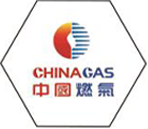
10 月 . 31, 2024 15:03
Back to list
Gas Pressure Regulation Station for Safe and Efficient Gas Distribution System
Gas Pressure Reducing Stations A Key Component in Gas Distribution Systems
Gas pressure reducing stations are critical installations in the gas distribution network, ensuring that natural gas is delivered safely and reliably to end users. Their primary function is to reduce the high pressure of gas that comes from transmission pipelines to a more manageable pressure suited for commercial, industrial, or residential use. This article delves into the importance, components, and operation of gas pressure reducing stations.
Importance of Pressure Reducing Stations
In any gas distribution system, high-pressure gas is transported over long distances through pipelines. When this gas reaches its destination, the pressure must be reduced to ensure safe operation and prevent potential damage to downstream equipment. If the pressure remains too high, it can create hazards, including leaks, ruptures, or explosions.
Pressure reducing stations play a pivotal role in ensuring that gas is supplied at the correct pressure levels. They help maintain the integrity of the distribution network and protect consumers from the risks associated with high-pressure gas. Furthermore, these stations are essential for regulatory compliance, as various safety standards govern the gas distribution industry.
Components of a Pressure Reducing Station
A gas pressure reducing station typically consists of several key components
1. Pressure Regulators These are the heart of the station, controlling the outflow pressure by adjusting the flow of gas. Regulators can be mechanical or electronic and are designed to maintain a constant output despite variations in inlet pressure or demand.
2. Control Valves These valves work alongside regulators to manage the flow and pressure of gas. They can be automated and remotely controlled to ensure efficiency and safety in operation.
gas pressure reducing station

3. Filters Before gas passes through regulators, it is essential to remove impurities and particulates that could damage equipment or impair function. Filters play a crucial role in keeping the system clean.
4. Emergency Shutoff Valves Safety is a primary concern in gas distribution. Emergency shutoff valves can quickly stop the flow of gas in the event of a fault, preventing potential disasters.
5. Instrumentation and Control Systems Advanced stations come equipped with instrumentation to monitor pressure, flow, temperature, and other critical parameters. These systems enable operators to detect anomalies and ensure that the station operates within safe limits.
Operating Principles
Gas pressure reducing stations operate in a systematic manner. High-pressure gas enters the station and flows through filters, which remove contaminants. The gas then passes through regulators that systematically reduce the pressure to the desired level.
In many installations, the process is continuously monitored via sensors. If the pressure drops below or rises above the setpoint, the control systems adjust the regulator or activate control valves to stabilize the output pressure. This real-time monitoring not only enhances safety but also improves operational efficiency.
Conclusion
Gas pressure reducing stations are indispensable in the safe and efficient distribution of natural gas. Their ability to convert high-pressure gas into a safe, usable form ensures that homes, businesses, and industries have the energy they need while adhering to stringent safety standards. As the demand for natural gas continues to rise globally, the importance of reliable and advanced pressure reducing stations will only increase, highlighting the need for ongoing investment and innovation in this critical infrastructure.
Latest news
-
Unlocking The Quality Gas Pressure ReducersNewsNov.01,2024
-
The Role of Gas Pressure Reducing StationsNewsNov.01,2024
-
The Importance and Functionality of Safety Relief ValvesNewsNov.01,2024
-
The Essential Role of Safety Valves in Natural Gas ApplicationsNewsNov.01,2024
-
The Essential Role of Gas Pressure RegulatorsNewsNov.01,2024
-
Enhance Your Premium Gas FiltersNewsNov.01,2024

